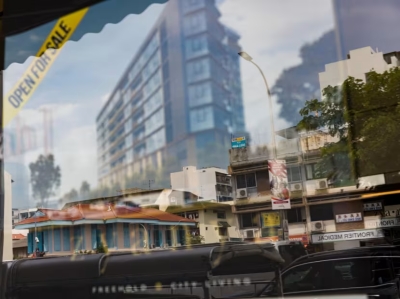SINGAPORE, July 27 — In squeaky-clean Singapore, the district of Geylang has always stuck out like a sore thumb.
Its name alone can evoke imagery of illegal gambling dens, shady drug peddlers and secret society members scattered across its many lorongs (lanes), coexisting alongside the bright neon lights illuminating from brothels.
Following the Little India riots in 2013, Geylang — the island’s infamous red-light district — was even described by then Police Commissioner Ng Joo Hee in 2014 as a place with a “hint of lawlessness”; a “potential powder keg” of crime waiting to blow up.
Mr Ng had told the Committee of Inquiry into the Little India riots that the police were more worried about Geylang because “all the indicators for potential trouble are there”.
He called Geylang a “hot spot” for crimes such as illegal gambling and drug dealing, and where “unsavoury characters of all persuasion are fond of congregating”.
Most worryingly, there was overt hostility and antagonism towards police presence there, he said, adding that there was nowhere else in Singapore which was “policed more intensely as the 20-odd lorongs on either side of Geylang Road”.
Geylang’s less-than salubrious reputation is something long-time residents can attest to. Just ask social entrepreneur Cai Yinzhou, 34, who has lived in Geylang all his life.
He recalled having a diverse range of neighbours growing up, from illegal sex workers to those who ran gambling dens directly above his apartment.
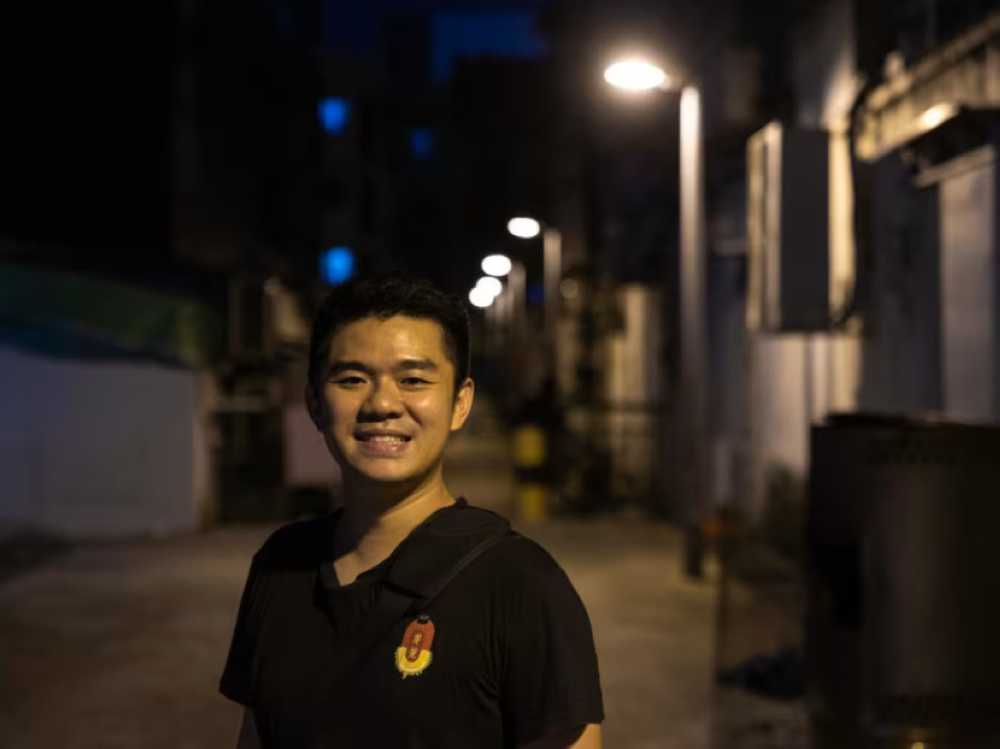
Social entrepreneur Cai Yinzhou, 34, has lived in Geylang all his life. He runs Citizen Adventures, which does tours in communities like Geylang and Dakota Crescent. — Nuria Ling/TODAY
Back in the 2000s and 2010s, police raids were a common sight. From his room, Mr Cai would hear frantic footsteps of fleeing men and women and the sound of boots hitting the concrete — courtesy of the policemen who gave chase.
“Sometimes you’ll see them getting caught. They’ll scream, cry and sob while waiting for police cars to pick them up,” he said.
“That was part of the liveliness of Geylang.”
Was he ever worried for his own safety? Not quite, but his mother sure was, he said.
“It’s common to feel like somewhere is dangerous if you don’t understand the place. But because I grew up here, I feel like I understand how things work — it’s just where I hang out.”
Six years ago, home renovator Jin Quek had peddlers who sold contraband cigarettes rush into his interior design office at Lorong 12, seeking refuge from the police.
“When the police come, they will run away like monkeys. I had no control (of where they’ll go), they’ll just dash in,” he said.
Today, however, most long-time residents and business owners said that the “problem child” of Singapore is a scrubbed-up version of its former sleazy self.
This partial makeover is in large part due to several key law enforcement measures.
Bright lights illuminate the previously pitch-dark back alleys. Police closed-circuit televisions (CCTVs) parked atop street lamps cover every nook and cranny. Signboards prohibiting the public consumption of liquor past 10.30pm stare you down.
Ms Alice Chua, who has worked at a pawnshop at the intersection of Geylang Road and Lorong 22 for over 30 years, said that crime in Geylang is no longer as pervasive as it used to be a decade ago.
“Technology is so advanced now. It is so easy to catch anyone up to no good,” the 62-year-old told TODAY in Mandarin.
While she still witnesses alcohol-induced arguments occasionally outside her shop, the frequency of these squabbles devolving into fisticuffs has lessened considerably.
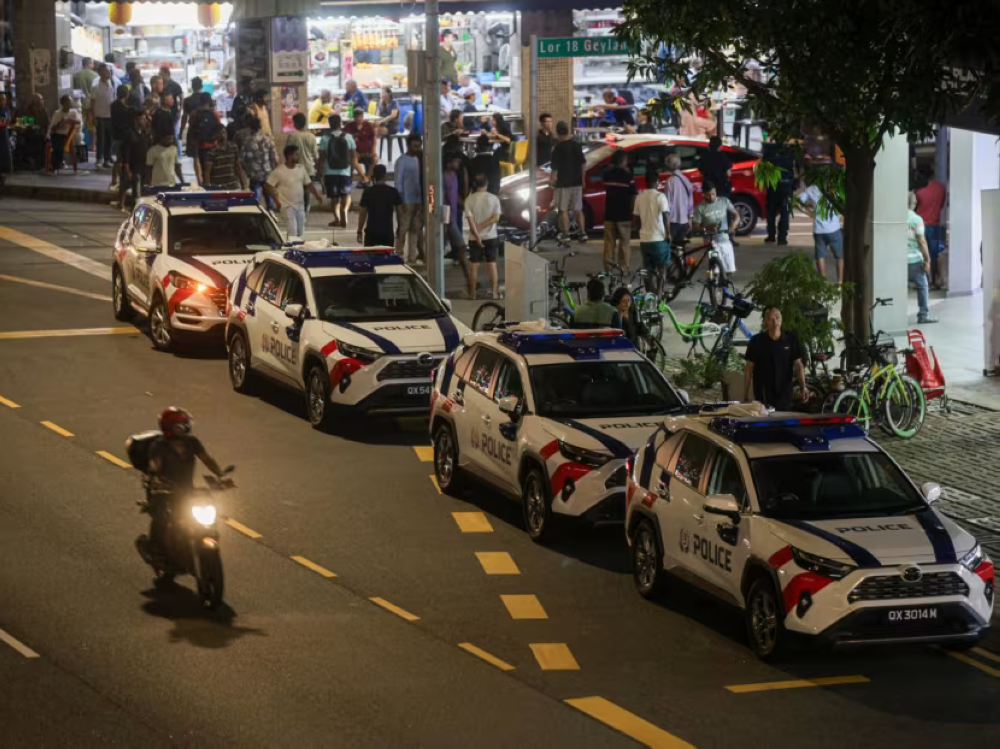
Police cars parked along Geylang Road on July 21, 2024. — Nuria Ling/TODAY
Two long-time employees of hotels along Jalan Molek, a street off Lorong 24, concurred with Ms Chua’s assessment: The presence of CCTVs has definitely reduced crime.
The sense that Geylang has become safer over the years is backed up by some statistics released by the Government.
Serious crimes reported at Geylang, such as robbery and snatch theft, fell by more than 42 per cent — from 134 cases in 2013 to 77 cases in 2016. Public order-related cases such as affray and serious hurt had also fallen by 27 per cent in the same time period, from 51 to 37.
There have been no publicly released statistics on crime in the area since then.
Still, going by the police’s press statements in recent years, it is clear that the authorities still regularly conduct multi-agency enforcement operations to clamp down on crime and illegal activities in the Geylang area.
One such series of operations from March 23 to 31 this year led to the arrest and investigation of 35 individuals — 23 men and 12 women, aged between 17 and 76 — for various offences relating to illegal gambling, vice activities, sale of illegal sexual enhancement products, illegal employment and illegal hawking.
Even though Geylang appears to have cleaned up its act significantly since Mr Ng’s comments, its reputation for vice, danger and disorder is harder to shake off, based on TODAY’s interviews with residents, businesses as well as property agents.
For two weeks recently, TODAY walked the streets of Geylang to ascertain just how much the area has changed in a decade, the impact that its sticky stigma has had on its businesses and property prices, and what its future might look like.
Measures to tackle crime in Geylang post-Little India riots
In April 2015, the police declared parts of Geylang — a rectangle zone stretching from Lorong 4 to just beyond Lorong 41 bounded by Sims Avenue and Guillemard Road — a Liquor Control Zone.
Liquor Control Zones are defined as areas in Singapore that carry a significant risk of public disorder associated with the consumption of liquor.
In these zones, there is to be no consumption of liquor in public spaces from:
10.30pm to 7am on Monday to Friday 7am on Saturday to 7am on Monday 7pm on the eve of a public holiday to 7am on the day after a public holiday
In 2016, the police also added an additional 252 CCTVs around Geylang. Streetlights in 36 back alleys were also enhanced.
Additionally, the Geylang Neighbourhood Police Centre (NPC) moved in 2019 from its original site at 132 Paya Lebar Road in Ubi to the junction of Cassia Link and Guillemard Road — just across the road from Lorong 30 Geylang.
The NPC is staffed with about 160 police officers — about 60 per cent more than the manning levels in other NPCs.
According to then Second Minister for Home Affairs S Iswaran in 2014, additional police fast response cars are deployed on Friday and weekend evenings to augment the regular fleet. This is to manage incidents and enhance police response in and around the lorongs in Geylang.
Special Operations Command troopers are also deployed in the area to project a strong police presence on a regular basis.
Furthermore, in 2015, the Urban Redevelopment Authority (URA) rezoned the area bounded by Geylang Road, Lorong 22 Geylang, Guillemard Road and Lorong 4 Geylang from a “residential/institution” to a new “commercial/institution” zoning.
The URA said then that the rezoning was due to an “increasing spillover of disamenities and friction on the ground between residents and the diverse uses in the area”, following the rise of newer residential developments there.
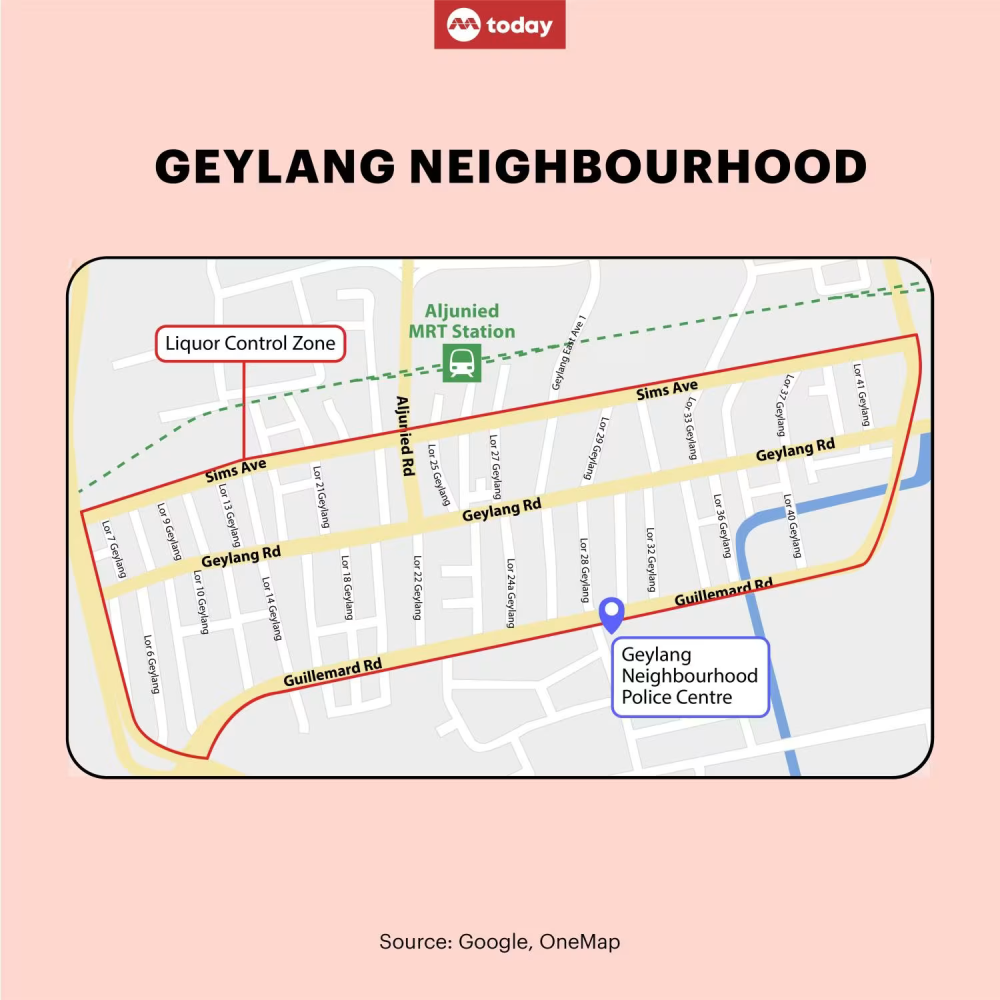
Graphics by Nurjannah Suhaimi/TODAY
A district lit with less red?
It is common knowledge among those who live and work in Geylang that its even-numbered lorongs are the home of the red light district, where brothels reside. Prostitution is legal in Singapore, but these brothels have to obtain a licence from the Government in order to operate.
From TODAY‘s walkabouts in Geylang, this reporter observed that the majority of active brothels congregate along the three lorongs (16, 18 and 20) adjoined by Westerhout Road, with several others scattered across the rest of the even-numbered lorongs.
Several publications, like CNN and Business Insider, previously reported that more than 100 brothels can be found in the district, but there are no numbers published by official sources.
As such, it is unclear whether the number of brothels has decreased over the years. But residents unanimously agree that the number of illegal “streetwalkers” — those who roam the streets soliciting for clients — has gone down.
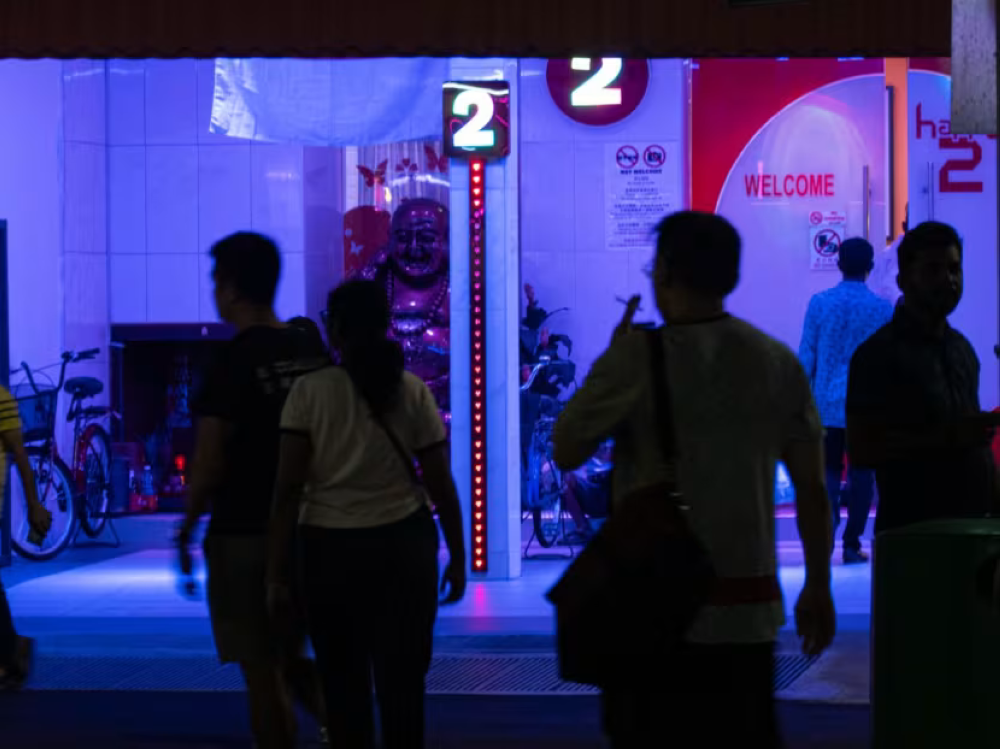
A brothel in Geylang. Prostitution is legal in Singapore, but these brothels have to obtain a licence from the Government in order to operate. — Nuria Ling/TODAY
One alley away from long-time resident and embroiderer Jeffrey Eng’s shophouse, there was often a long line of scantily dressed women he dubbed as reminiscent from a scene in the American TV series “Baywatch”.
“I used to describe my Lorong 24A as heaven, and Lorong 24 as hell, because of the red light (activities there),” he said, describing the lane that runs parallel to the one where he lives.
But Mr Eng noticed that the streetwalkers disappeared after the pandemic.
That’s why, Ms Chua the pawnshop employee quipped, it might be more appropriate to dub Geylang a “pink light district” now instead.
Dr Wan Rizal Wan Zakariah, who has been the Member of Parliament (MP) for the area since July 2020, told TODAY that he has not received any recent complaints from residents pertaining specifically to unlawful activities in Geylang.
“This reflects the significant efforts by agencies to improve safety and security in the area,” said the Jalan Besar Group Representation Constituency MP.
“Geylang has indeed transformed over the years, and it is important to recognise and celebrate these positive changes.”
Similarly, Mr Lim Biow Chuan, MP for Mountbatten Single-Member Constituency since 2011, also told TODAY that in the past, when he conducted house visits at Cassia Crescent which is next to Geylang, he would get complaints from residents about female streetwalkers crossing over to the public housing estate to solicit for business.
“I have stopped receiving such complaints,” he said.
“My sense is that things are better,” he added, referring to the public order situation in Geylang.
There are also fewer contraband cigarettes on sale these days, though it is not uncommon to find peddlers selling illegal sex enhancement drugs of various shapes, sizes and colours that may look like harmless candy to the uninitiated.
Some residents said they still see gambling tables in back alleys pop up once in a while, but those too are few and far between.
According to long-time Geylang resident Mr Cai, police surveillance, enforcement and the Covid-19 pandemic — with restrictions on travel and public gatherings — have contributed to the decline in crime in the area.
But there might be a larger factor at play.
“Vice has evolved to move online — it does not need a physical presence. That has also contributed to the reduction of crimes in Geylang,” he said.
“You can now buy anything anywhere and have it delivered to you.”
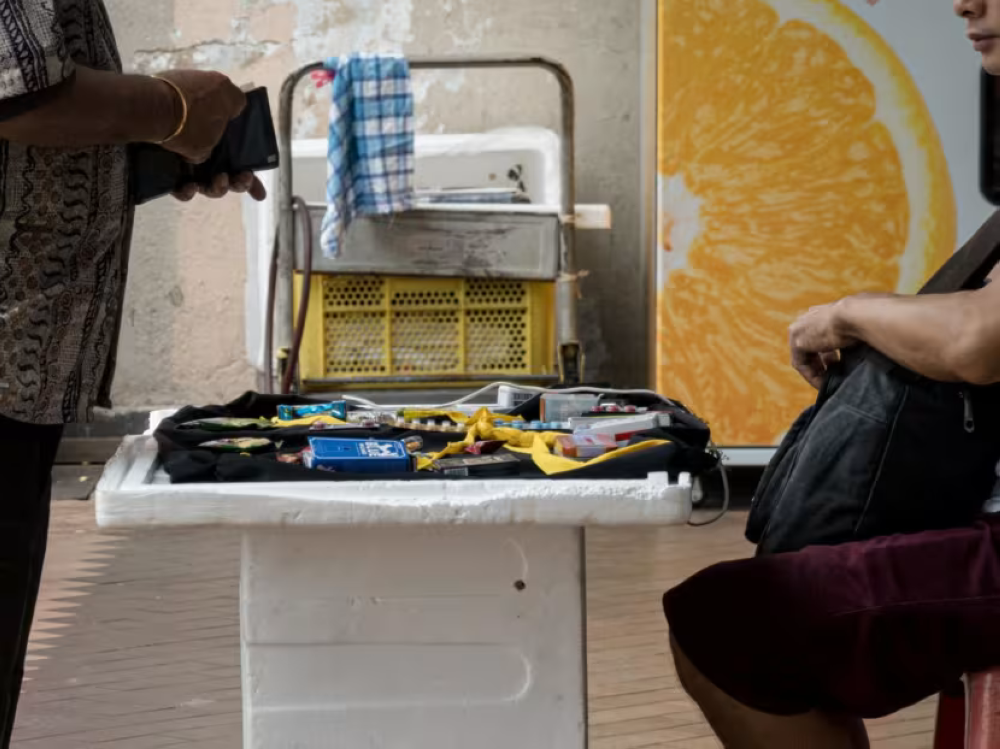
An illegal street peddler sells pills on a sidewalk along Geylang Road on July 19, 2024. It is not uncommon to find peddlers selling illegal sex enhancement drugs of various shapes, sizes and colours that may look like harmless candy to the uninitiated. — Nuria Ling/TODAY
Geylang’s transformation over the past decade encompasses more than just cosmetic changes. New businesses helmed by young faces are attempting to freshen up the district and give youths — and families — a reason to visit.
The Skewer Bar, a fusion food outlet located along Lorong 25, is one such business that residents consistently point out to emphasise the area’s injection of youthful vibrance.
Its co-founder Vincent Low, 40, said that his goal is to create an establishment with a modern concept, distinct from the often dilapidated shophouses in the vicinity.
Mr Low said parents have told him that they feel at ease bringing their children there on weekends too because of The Skewer Bar’s warm and inviting façade.
The same thing can be said of Get Some, a hip restaurant chain located directly opposite Geylang’s red-light district. The eatery is separated from Lorongs 18 to 22 by Guillemard Road, a six-lane thoroughfare.
Despite its Geylang outlet being in business for three short months, its founder Hendrik Kiew, 35, said it has already managed to attract a “multigenerational” base of customers from newer Build-to-Order public housing projects in neighbouring Dakota and Mountbatten.
“We no longer feel that (Geylang) is not a place to be associated with. In fact, it should be seen as part of our rich heritage and history,” said Mr Kiew.
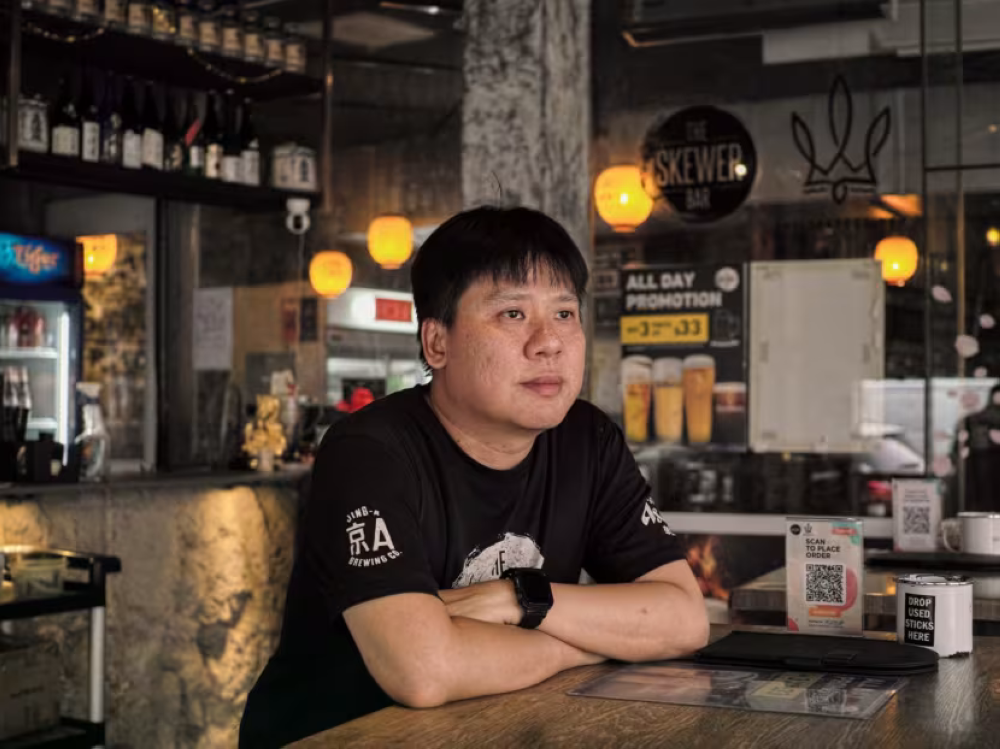
Mr Vincent Low, 40, co-founder of The Skewer Bar at Geylang, said he often has difficulties hiring young people to work for him. — Nuria Ling/TODAY
A smidge of stigma remains
To be sure, these establishments benefit from having modern welcoming exteriors, and are not located in the heart of where the red light district traditionally is.
Closer to those areas, passers-by of varying demographics told TODAY it is hard to completely disassociate Geylang from its historical notoriety.
When 25-year-old analyst Rachel Quek visits Geylang for work, the juxtaposition of massage parlours, brothels, old religious landmarks and associations unsettle her sometimes — especially in the evenings, where the glow of bright neon and amber illuminating from these establishments can be disconcerting.
Ms Farhana Ayu, a 41-year-old senior executive in the elevator industry, said that she would have no hesitation going to Geylang by herself for its good food, for instance, but would still be wary of taking her children along with her.
“I’m more concerned about the violence caused by alcohol… and I wouldn’t want to answer my kid’s questions like: ‘Why are there ladies standing around there?’,” she said.
Indeed, there was an obvious absence of younger families patronising stalls or strolling along the busy and bustling Geylang Road on TODAY’s multiple visits there both day and night.
The “Geylang stigma” can be so entrenched that, till today, Ms Chua the pawnshop employee does not tell others that she works in the area: “It raises too many questions.”
This long-standing impression of a seedy, shady Geylang can cause some problems for businesses there too — like Mr Low of The Skewer Bar, who said he often has difficulties hiring young people to work for him.
“Once parents find out that my bar is in Geylang, they will not let their children work here… This has happened many times,” he said.
But this “family unfriendly” stigma’s impact on food and beverage (F&B) establishments’ bottom line is not that pronounced, business owners said.
For starters, in the past 30 odd years, Geylang has earned itself a reputation for being a food haven that comes alive after dark with high foot traffic.
The potential to reach out to families per se has never been the main appeal.
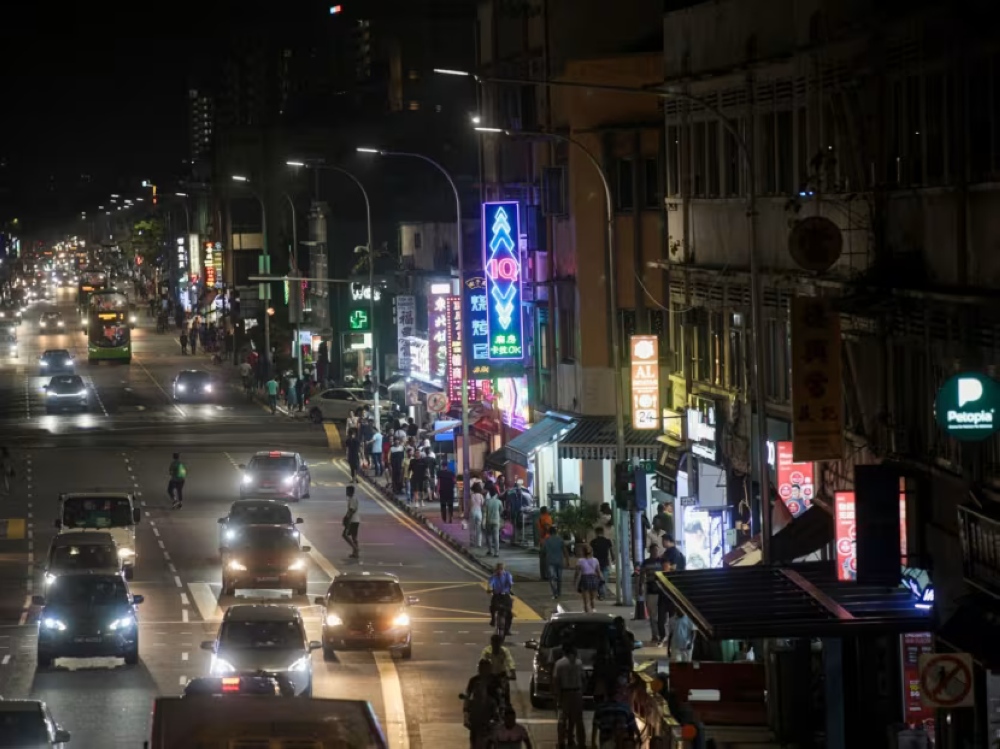
In the past 30 odd years, Geylang has earned itself a reputation for being a food haven that comes alive after dark with high foot traffic. — Nuria Ling/TODAY
Food entrepreneur Shaun Lee, who co-founded Jiak Durian Mai located along Lorong 12, said he chose to set up shop in Geylang because the area is known by Singaporeans to be a famous “durian hub”.
Furthermore, its central location allows the 27-year-old to deliver orders to his customers faster than competitors around the country — a key differentiating factor of his business.
What is more concerning for some of these businesses is the sheer multitude of food options Geylang’s visitors have.
Mr Low described the F&B scene as “flooded”, which also puts pressure on him to keep prices affordable amid inflation and increasingly price-sensitive customers.
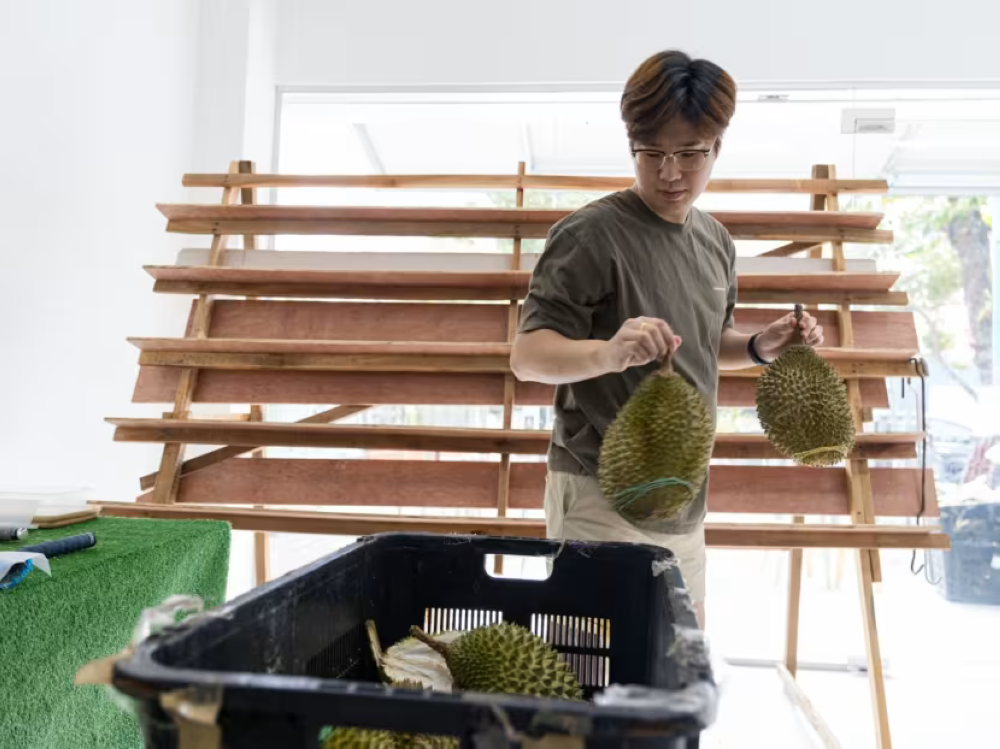
Mr Shaun Lee, 27, co-founder of F&B brand Jiak Durian Mai, chose to set up shop in Geylang because the area is known by Singaporeans to be a famous “durian hub”. — Nuria Ling/TODAY
A ‘transient’ community not of locals
To what extent then does Geylang’s lingering stigma affect residential property developments in the area?
For residential units located on even-numbered lorongs, which are commonly associated with vice activities, it can often take up to six months before a willing buyer is found, said property agents familiar with Geylang.
This is because such properties attract only a small pool of buyers — those who typically view them as investments rather than homes to live in.
These investors often have no trouble renting out units in Geylang to either expatriates who do not mind the neighbourhood’s reputation, or to companies which need to house their migrant workers.
Agreeing with this observation, Mr Cai, the long-time Geylang resident, noted that there have been noticeably fewer Singaporeans who live in the neighbourhood in recent years.
“My neighbours are largely transient. Most of them these days are migrant workers, from low-wage construction to security guards and nursing assistants.”
Locals, he said, simply do not “aspire” to call Geylang home.
At Wing Fong Mansions, a 218-unit freehold development located along Lorong 14 that was built in 1997, only around 20 per cent of its residents are Singaporeans, according to two property agents who listed units from the condominium online.
The same appears to be true of recent residential developments too that have sprouted out, mostly in Lorongs 26 to 40 that are not affected by URA’s rezoning move in 2015.
According to tenants living in the 2023-completed condominium NoMa, situated at the intersection of Guillemard Road and Lorong 28, most of its residents are either expatriates or foreign students.
“Not many Singaporeans can accept living in Geylang — even if the apartment is not near the red-light district,” said Ms Josephine Teh, a property agent with real estate agency PropNex.
Since the URA rezoned the area from Lorong 4 to 22 bound by Geylang and Guillemard Road from a “residential/institution” to a new “commercial/institution” zoning in 2015, 23 new private residential projects have been launched and sold in Geylang from 2017 to now.
This represents an average of almost 2.9 projects a year in that time, a stark contrast to the average of 10.25 projects a year launched and sold in the preceding eight-year period from 2008 to 2015.
But property experts added that there is another major, perennial barrier preventing Singaporeans from purchasing properties there: Very few banks are willing to provide loans for Geylang addresses.
This unwillingness stems from a perception that properties in the area are more susceptible to instances of crime and other transgressions.
And from the bank’s perspective, it would be an unnecessary risk to loan money to someone who might not be able to make timely repayments because of complications arising from illicit activity.
Without these loans, few buyers would be willing or able to fork out six- or seven-figure sums to purchase a property upfront. For banks that do approve loans to purchase residential units in Geylang, the loans often come with a higher interest rate, too, said property agents.
Mr Terry Wong, senior director of capital markets for real estate firm JLL, said this is not surprising in spite of locals’ reluctance to live there, as Geylang has always been a relatively prime location due to its proximity to the Central Business District (CBD).
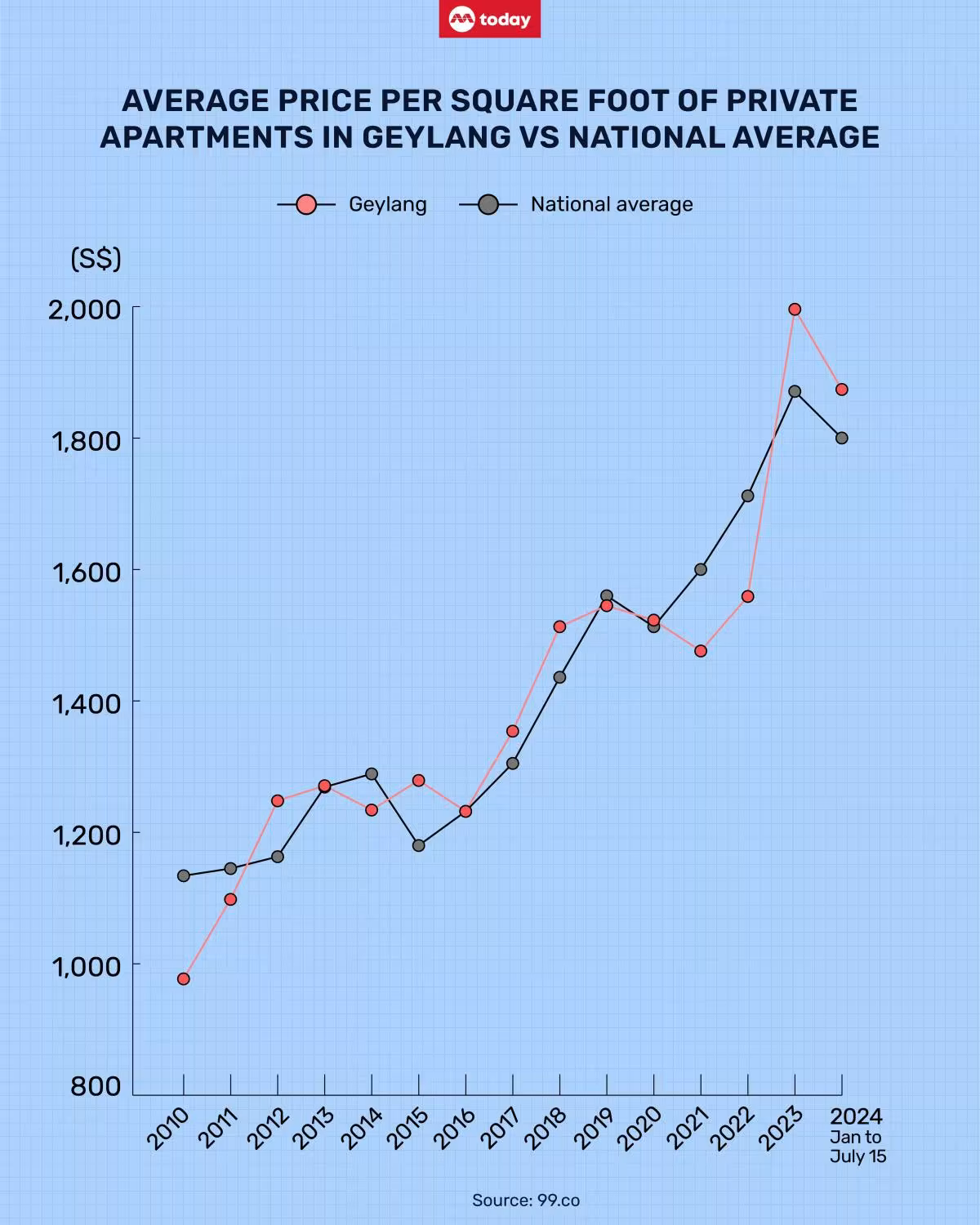
Graphic by Samuel Woo/TODAY
Nonetheless, the average price per square foot of Geylang’s non-landed private residential units has been comparable to the rest of Singapore over the last decade.
Rental prices in Geylang ‘competitive’
Ironically, Geylang’s seedy reputation does have an upside for those looking to rent an apartment — the area offers “value for money”.
Mr Luqman Hakim, chief data officer at real estate outfit 99.co, noted that Geylang’s residents are blessed with a good location well served by public transport, great amenities with various 24-hour eateries, and excellent exercise facilities and sporting events in the nearby Sports Hub — all at relatively cheaper rents.
Indeed, monthly rental rates in private residential units in Geylang over the past 10 years have consistently remained about S$1,000 cheaper than the national average, based on data from 99.co.
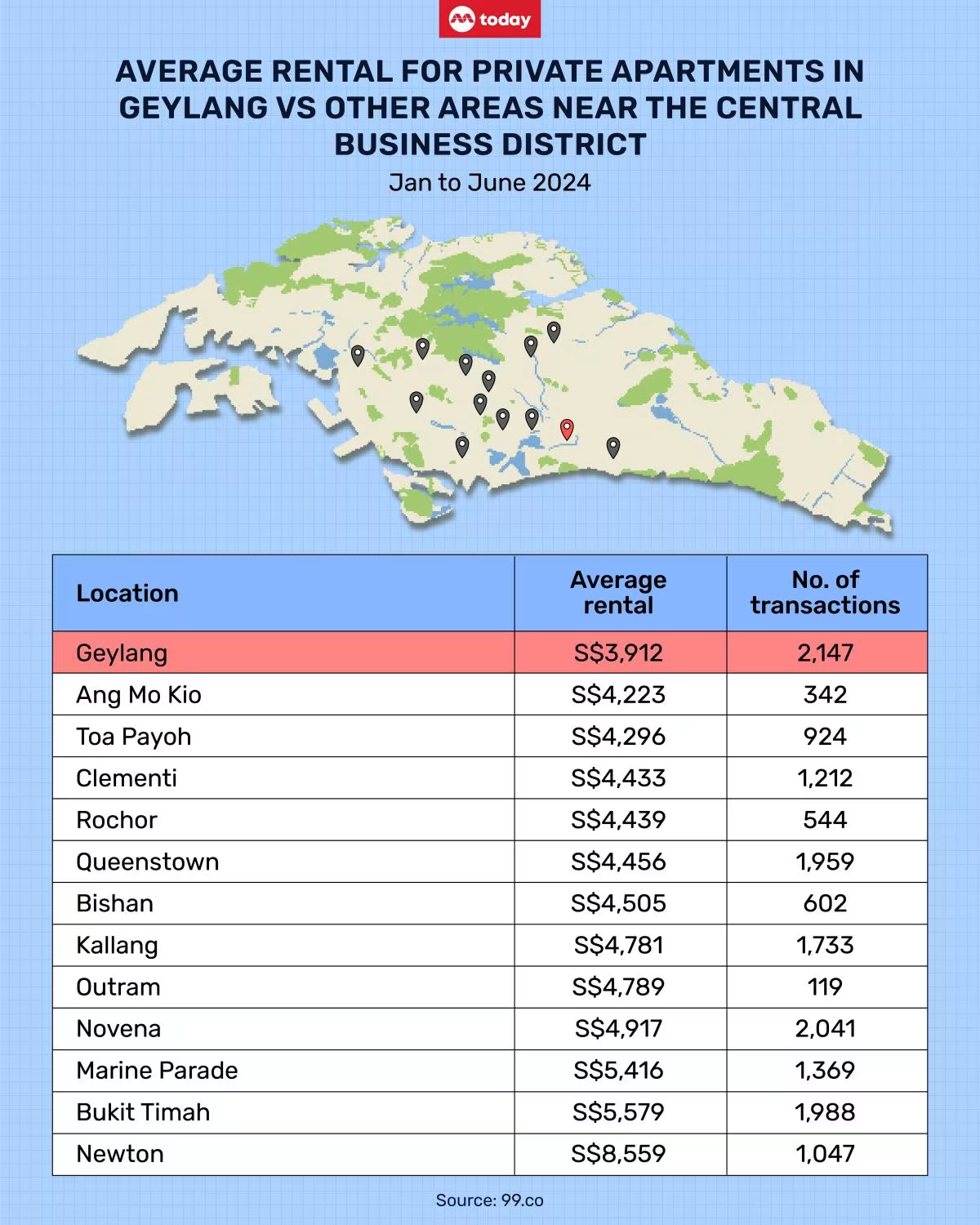
Graphic by Samuel Woo/TODAY
Compared with other locations in Singapore that are similarly close to the CBD, the average monthly rent for a private residential unit in Geylang is significantly lower too — based on 99.co’s data gathered from January to June 2024.
For example, Geylang’s average monthly rent of S$3,912 is about S$300 less than Ang Mo Kio, and a whopping S$4,600 less than Newton.
It is this mix of relative affordability and convenience that has drawn some Singaporeans to rent apartments there.
Since moving into her new rented apartment at La Brisa condominium along Lorong 28 last year with her husband, commuting to her office at the CBD is a mere 15-to-20-minute affair, said 23-year-old financial analyst Jessica, who wanted to be known only by her first name for privacy reasons.
“We like this place too because people think it’s (messy and unsafe), and so we were able to get a lower price,” she said.
For similar reasons, another Singaporean, a public relations practitioner who wanted to be known only as Ms Charlene, rented an apartment at the NoMa condominium with her partner two months ago.
Ms Charlene said that before signing the lease agreement, they “scouted” the neighbourhood both in the day and at night to ascertain that there was nothing that particularly concerned them despite the stigma.
The fact that the Geylang Neighbourhood Police Centre was right across the street from the condominium was also a large pull factor safety-wise.
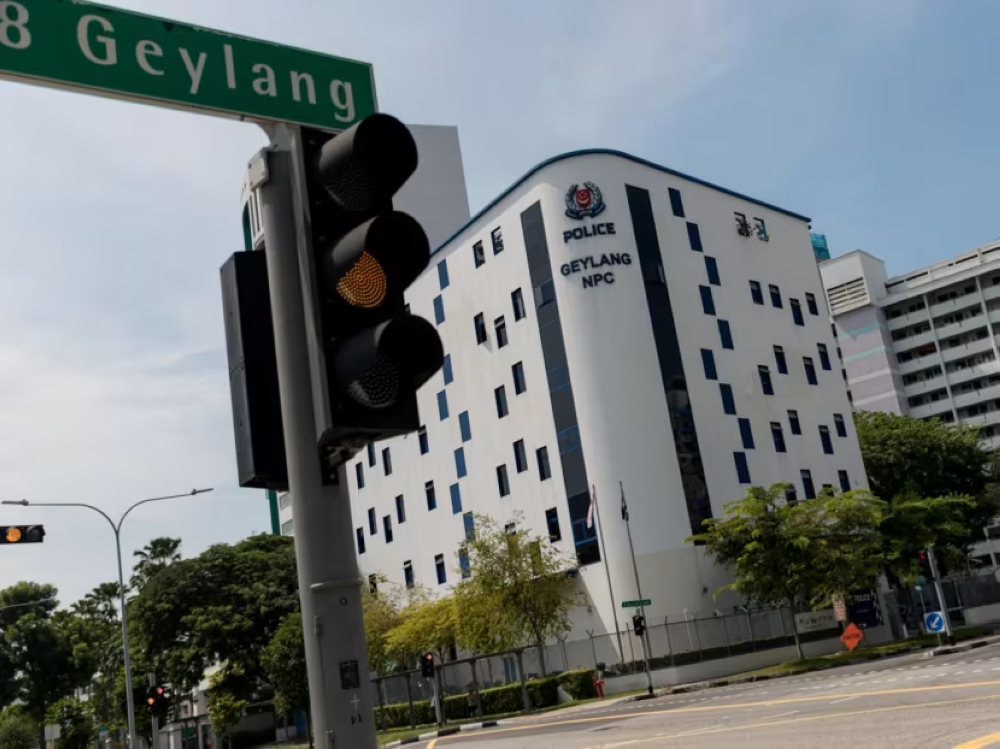
The five-storey Geylang Neighbourhood Police Centre that was opened in 2019. — Nuria Ling/TODAY
What does the future of Geylang look like?
For some property developers and analysts, the future of Geylang might look a little like present-day Bugis Village, Keong Saik Road, or Joo Chiat.
The former two were previously well-known red-light districts that have successfully shed their unsavoury past and are now well-known gentrified commercial areas.
As for the latter, a mix of modern boutique cafes have made themselves home alongside conserved shophouses with heritage value — features not too dissimilar from what you would find along Geylang Road.
The fact that crime is no longer as visible and prevalent in Geylang bodes well for its future development too.
For Mr Sebestian Soh, the co-founder and director of real estate investment firm Meir Collective, the shrinking footprint of vices symbolises a blank slate and represents an opportunity to “reimagine” Geylang in a different way.
Meir Collective had bought several commercial properties in Geylang in 2019 before the pandemic struck, and Mr Soh said it has endeavoured to build sites that are flexible and accommodate different kinds of tenants — ones that can celebrate its pre-seedy heritage.
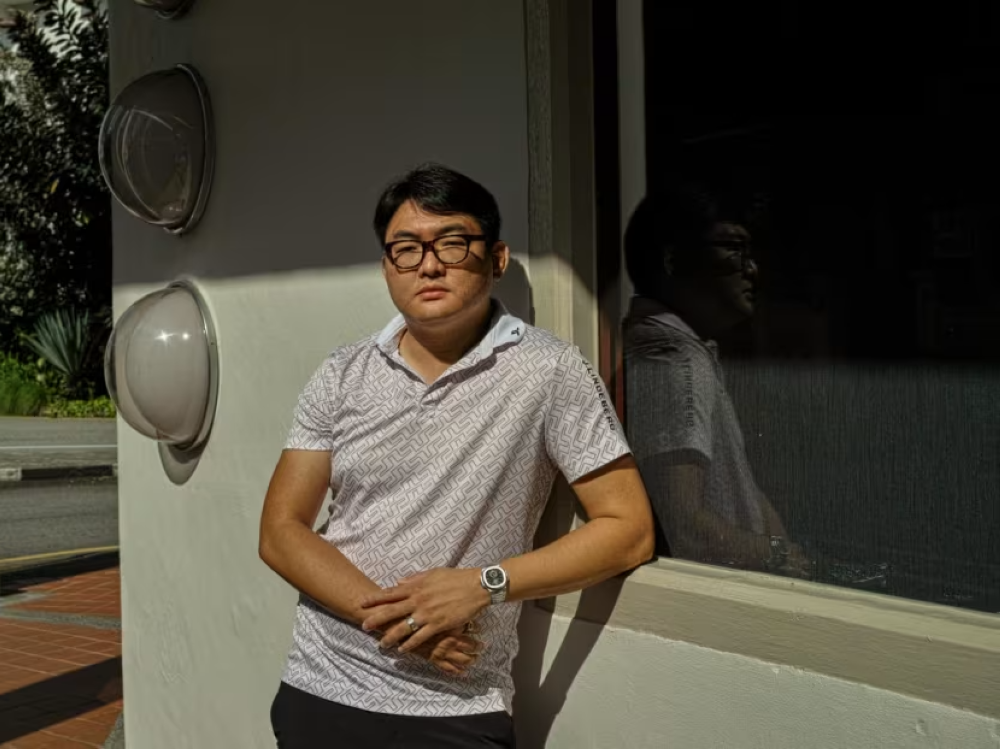
Mr Sebestian Soh, the co-founder and director of real estate investment firm Meir Collective, thinks that the shrinking footprint of vices symbolises a blank slate and represents an opportunity to “reimagine” Geylang in a different way. — Nuria Ling/TODAY
The Government’s plans to relocate Paya Lebar Airbase in the 2030s will also enable a rejuvenation of developments — apart from Geylang’s conserved shophouses — given that some buildings would no longer be bound by height restrictions.
This could potentially lead to more footfall for Geylang’s businesses, Mr Soh added.
However, some property analysts believe that the gentrification of Geylang will not be a straightforward process, given its large size compared to Bugis Village and Keong Saik Road.
“On one hand, you have a very strategic place that has mostly freehold land parcels that sits almost equidistantly between both the CBD and the airport,” said Mr Luqman of 99.co of Geylang.
“But these land parcels are so fragmented with different land owners that it’s hard to amalgamate them together to build a meaningful development.”
The recently completed 50-unit NoMa condominium is one such example. Its developers had tried but failed to convince the owner of a house along Lorong 28 to sell, causing them to go back to the drawing board before starting construction.
Additionally, property experts said that older residential condominiums that could potentially be put up for an en-bloc sale might hit a stumbling block in the form of owners who have been earning an income by renting out their units each month and see no need to change the status quo.
But even in the face of these possible hurdles, those who have come to adore the place are optimistic that Geylang can continue to evolve from its status as Singapore’s vice hub.
Mr Eng, the long-time resident and embroiderer, said he frequently expresses his disdain at the common moniker Geylang has cultivated over the years.
“We should not label (the whole of) Geylang as a red light district, because it is not,” he said passionately.
He has witnessed the transformation of Geylang over the past two decades from his shophouse along Lorong 24A — where he repairs everything from opera costumes to antiques.
Mr Eng hopes to see Geylang continue to undergo its own repair process too, he said, from “sin city” to a modern, bustling neighbourhood without the red lights — and preferably with its cultural roots intact.
Mr Lim, the Mountbatten MP, added: “Geylang is a prime area near the city. If it is able to shake off the stigma, then it can be an attractive place for younger couples to settle in the area.” — TODAY

